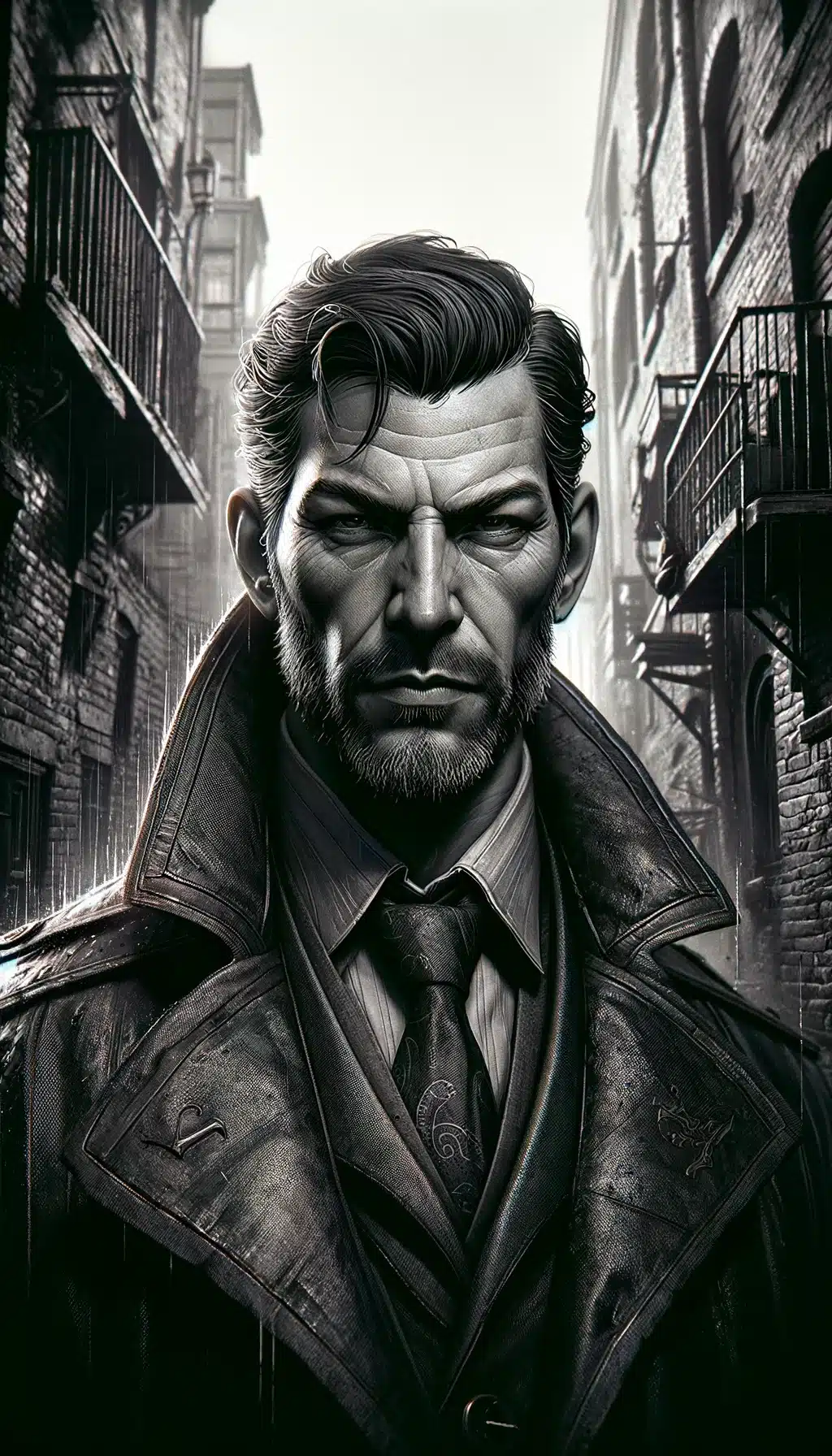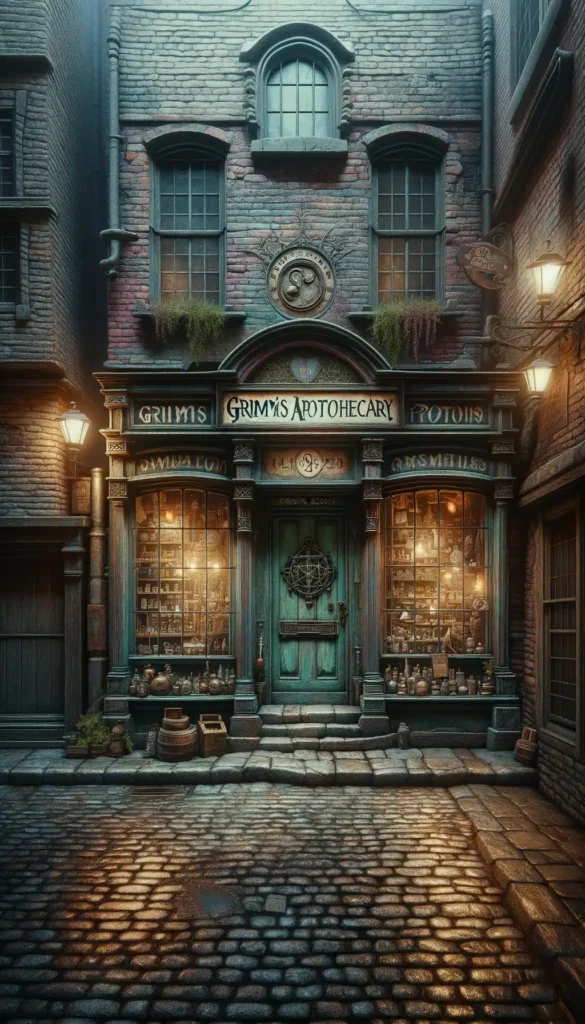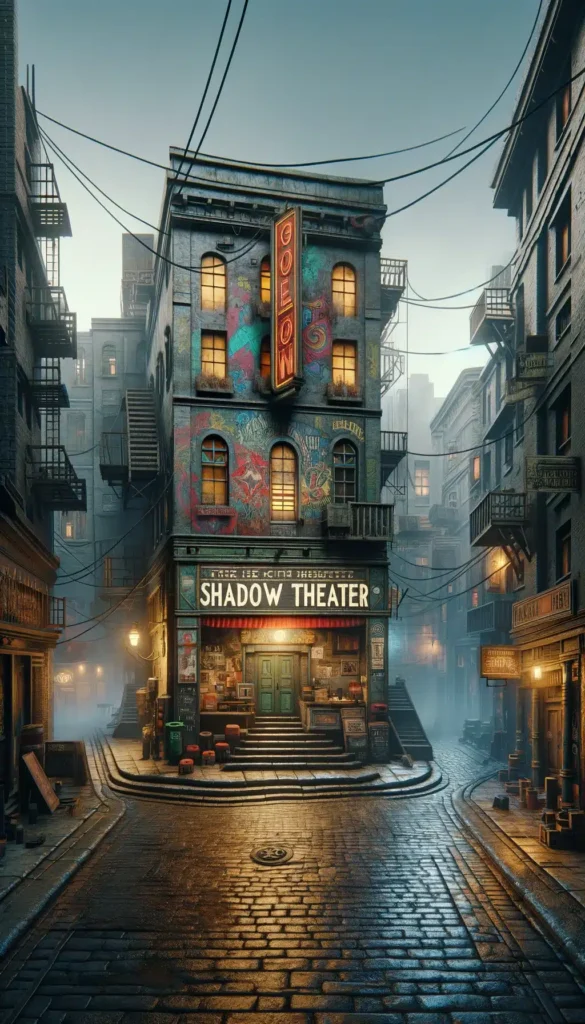
The Gloom District
The Gloom is a district of narrow cobblestone streets wandering between rows of tenement buildings. Many of the structures are dilapidated, with faded brick and peeling paint. Yet there are signs of life – flower boxes on windowsills, children playing in the streets, vendors selling food from carts.
A Tapestry of Resilience Woven in Shadow and Soot
The Gloom, a district etched in the very shadow of The Heights, is a testament to the enduring human spirit, a place where hope flickers amidst the grime and decay, and a sense of community thrives in the face of adversity. Here, within a labyrinth of narrow cobblestone streets and aging tenement buildings, life persists, a symphony of laughter and hardship, resilience and despair.
From Hopeful Beginnings to Industrial Neglect (1820s – 1900s)
Initially envisioned as a community for skilled artisans and laborers who would contribute to Obsidian Heights‘ burgeoning industries, The Gloom District began with a spirit of optimism. The first wave of residents, drawn by the promise of steady employment and affordable housing, established a close-knit community. Small shops and businesses lined the cobblestone streets, while children played in the shadow of the newly constructed factories, their laughter a testament to the hopes of a brighter future.
The construction of the Blackwell Steel Mill on the outskirts of the district, however, marked a turning point. While the mill offered employment opportunities, it also brought with it the ever-present specter of pollution. The Stacks, those towering chimneys that pierced the sky, began to spew forth a constant stream of smoke and soot, coating the district in a layer of grime that seemed to seep into the very bones of its buildings.
The once-bright facades of the tenement buildings faded, their brickwork stained with a patina of industrial waste. The air, once filled with the aroma of baking bread and freshly cut lumber, now carried the metallic tang of iron and the acrid scent of coal smoke. The children who played in the streets coughed and wheezed, their faces smudged with soot, their laughter replaced by a persistent hacking cough.
The Great Fire of 1893, which ravaged The Nexus District, also left its mark on The Gloom. While the fire itself did not reach the district, the influx of refugees seeking shelter strained its already limited resources. Tenements became overcrowded, disease spread, and the sense of community that had once defined the district began to fray under the weight of hardship.
Enduring the Gloom (1910s – 1930s)
As Obsidian Heights entered a period of economic decline, The Gloom District bore the brunt of the city’s woes. Factory closures led to widespread unemployment, and the district’s residents struggled to make ends meet. The once-hopeful spirit that had defined The Gloom was replaced by a grim determination to survive.
Marcus ‘Kingpin‘ Devereux, a street-smart survivor who had clawed his way up from the district’s underbelly, emerged as a leader. He understood the needs of his people, providing a mix of protection, illicit employment opportunities, and a sense of belonging that the city government had abandoned. He ran gambling dens like The Rusty Nail, where workers could seek a fleeting escape from their troubles, and controlled a network of black market trades that provided necessities that were scarce or overpriced in the legitimate markets.
Despite the hardships, life persisted in The Gloom. Children still played in the streets, their games weaving around the puddles of grimy water and dodging the occasional rat scurrying through the overflowing garbage bins. Neighbors gathered on stoops, sharing meager meals and trading stories of both resilience and despair. The Blackthorn Pub, a dimly lit haven with worn wooden floors and the comforting scent of stale beer and tobacco, became a gathering place for those seeking a moment of camaraderie and solace.
The Shadow Theater, a once-grand performance space that had fallen into disrepair, was reclaimed by a group of artists and activists led by the passionate Esmeralda ‘Esme’ Valentine. Their plays, often critical of the city’s elite and their neglect of The Gloom, offered a voice to the voiceless and a glimmer of hope amidst the despair.
The Weeping Willow Inn, a quaint and slightly eerie establishment run by the kindhearted Martha, offered temporary shelter to those seeking a safe haven or a fresh start. Its creaking floorboards and dimly lit rooms whispered tales of both hardship and hope, a reflection of the district’s enduring spirit.
The Gloom, a district forged in the shadow of industry and neglect, became a testament to the tenacity of the human spirit. Its residents, though battered by the city’s harsh realities, clung to their sense of community, finding strength in their shared struggles and a glimmer of hope in the unexpected moments of kindness and beauty that bloomed amidst the gloom.
the nexus
Leadership
Marcus ‘Kingpin’ Devereux
Marcus ‘Kingpin’ Devereux is the enigmatic leader of The Gloom District, walking a tightrope between benevolent community leader and ruthless crime boss. He commands respect and fear in equal measure, his influence woven into the very fabric of the district. His pragmatic approach to survival, coupled with a genuine concern for his people, makes him a complex and compelling figure in the shadowy world of Obsidian Heights. He often operates in the gray areas of morality, his actions driven by a fierce loyalty to The Gloom District and its inhabitants.
Background
Emerging from the harsh realities of The Gloom District‘s streets, Devereux built his empire through a combination of street smarts, calculated risks, and an unwavering will. His upbringing instilled in him a deep understanding of the district’s dynamics and the needs of its people. He controls various illicit operations, including clandestine gambling dens like The Rusty Nail and covert marketplaces, ensuring the flow of necessities to those abandoned by the city’s elite. His control over these operations provides him with both wealth and leverage, allowing him to exert influence over both the legal and criminal elements within The Gloom District.

Architecture
The Gloom’s architecture reflects its history and character: Gothic influences, decaying tenements, cobblestone streets, and looming factory complexes. The skyline is marked by smokestacks, contributing to the district’s gritty ambiance.



Population
The Gloom is primarily inhabited by the working class, marginalized individuals, immigrants, and those facing poverty and addiction. High crime rates pervade, with drug dealing and prostitution being commonplace.
Discovering the Shadows of The Gloom District
Dive into the deep heart of Obsidian Heights with a visit to The Gloom District, a place where resilience and community spirit illuminate the darkest corners. Wander the narrow, cobblestone streets to stumble upon the rustic charm of Grimm’s Apothecary, a treasure trove of ancient remedies and whispered secrets. Let the flickering neon lights guide you to The Shadow Theater, where underground plays and forbidden performances challenge the status quo under the cover of night. In the midst of urban decay, find solace in the shared laughter and defiant creativity of The Gloom’s residents, who turn every day into a testament to survival and solidarity.